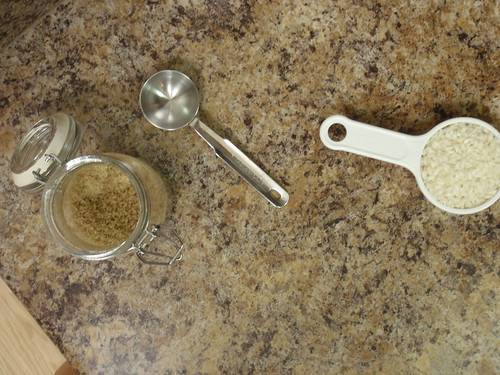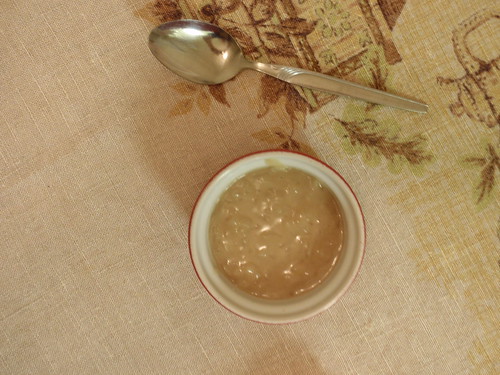This is my theory on running and life: you must be your own best cheerleader.
I’m really lucky that I have a lot of kind people in my life. These people are happy for me when things are going well, and they’re bummed with me when things are crappy. Still, I think we owe it to ourselves to treat ourselves the way we want other people to treat us. And that means hushing that inner voice telling you that you can’t, it’s not possible, you’re going to fail, you’re too tired, you aren’t smart enough, you’re lazy, you’re fat, you’re ugly, and on and on and on…as a woman, I often fear that we’ve taken society’s misogynistic messages and internalized them. Why else would women’s magazines feature pictures of impossibly beautiful women wearing bikinis? I think it’s because collectively, we’ve signed off on the idea that it is part of a woman’s duty to be thin and pretty. And I resent this message.
I think we owe it to ourselves to take care of our bodies, to strive for healthiness above beauty. I think about this message a lot, mostly when I have my own tiny moments of body insecurity. Yes, I’m happy with my weight, but I have moments when I ignore the whole so I can dissect the parts: is my belly a little more padded than it used to be? Are my thighs looking heavier? I do this little routine for a few minutes, then I remember: these parts are the same ones that pedaled me to work today, that accompanied me on my run yesterday. This is the body that will carry me to the end of my life, and if it doesn’t mind a little extra padding, then neither do I.
For most of us, our worries about a little extra padding are the fastest way to drain the joy and pleasure out of our days. Life is short. Carpe diem, I say, not carpe diet.
I digress. Let’s get back to this business of the inner cheerleader. My point in talking about bodies and our feelings toward them is that we seem to find it much easier to internalize negativity. I think a critical secret to success is to internalize a positive voice, a kind of optimism that only gets louder as things get harder. It’s a way to stay focused on the prize, to not let yourself be distracted by anything but the immediate goal. Believe me, there is plenty of negativity out there to drag you down, if that’s what you want. But what will lift you up? What makes you feel strong and capable? For me, my inner cheerleader is that source of focused positive energy.
I work in a field where positive feedback is often scant, and it’s something I’ve wrestled with for a long time. In graduate school, I don’t think my advisor ever said a congratulatory word to me when I was awarded a grant or when my paper was finally accepted for publication. I took his lack of praise pretty hard. It made me angry and depressed not to get accolades for achieving things that he and I had been working toward for so long. I felt like he owed me some praise. But now, looking back, I don’t think he did. He owed me his best efforts as a mentor, and I do think he did the best he could. But he didn’t owe me any praise.
Fast forward to this week. On Tuesday, I presented my research during lab meeting. It was an important talk, the first one I’ve given in a long time. I felt like it was a milestone of sorts, an evaluative moment after a long summer of intense focus. And the talk went really well! I put a lot of time and thought into it, and even though I didn’t have much of a chance to practice the talk, I feel like the presentation went smoothly. Afterward, I was quite pleased with it.
But the most important point is this: I did not receive any praise from my advisor. I still don’t know what my future prospects are with this lab—will I be working here next month? In three months? In six months? During the talk, my advisor did offer constructive critical feedback on my work, which I take as a positive sign. But I walked away from that meeting with little more than my own sense of self congratulations.
On a practical level, I do need to know what my options are, career-wise, in this lab. If I no longer have a position here, then I need to hit the job market to find a new one. I will have that conversation with my advisor before the month is over. But for now, I feel satisfied that I did the best job I could, and no one can take that away from me, no matter what happens next.
Sometimes the pat on the back we give ourselves is the one that matters most.
In addition to your inner cheerleader, the other thing you need is carrots. Rewards. A real pat on the back. Or, in my case this week, rice pudding made with Arborio rice and finished with a rum custard sauce.
I’m all about stealing borrowing inspiration, and this recipe collects its cues from three sources: the Moosewood folks; my blogging friend, the lovely Raquelita; and Nigella Lawson. I must be in a rather academic mood for all this citing of sources, but here’s how it worked: last weekend, I made the Rum Custard Sauce from the Moosewood Restaurant Book of Desserts. It’s very tasty on its own, but it really is a sauce, not something you pour into a bowl and eat by the spoonful on its own. (Not that I would do that…at least not without adding some bananas first! Bananas make Rum Custard Sauce healthy, right?) I needed something to go with my sauce, and Raquelita suggested rice pudding, which sounded perfect. I swear, sometimes I think she and I share a brain because I’ve had a recipe for pumpkin rice pudding on my mind. But for a pudding that was going to make good use of the Rum Custard Sauce, I wanted something simpler and more straightforward, and here is where I turned to Nigella Lawson. She’s got a recipe for rice pudding for one in How to Eat, which sounded homey and delicious. I took her basic recipe and tweaked it a bit to fit what I had on hand. The end result was a creamy, delicious, perfect rice pudding—simple and straightforward, just rice luxuriating in a sauce spiked with rum custard. There are no fruits and no spices, so it’s the kind of rice pudding a purist could love.
Risotto Rice Pudding with Rum Custard Sauce
Serves 2, perhaps with a little left over
For the Rum Custard Sauce (from Moosewood Restaurant Book of Desserts)
This eggless custard sauce could not be easier to make: a little light whisking and you’re done.
1/2 cup milk
1/2 cup heavy cream
1/2 cup packed brown sugar
1 tbsp. flour
2 tbsp. rum
1) In a saucepan, combine the milk, cream, and brown sugar. Whisk them together. Heat the mixture over low heat, and whisk in the flour. Stir constantly until the sauce thickens slightly and has no lumps.
2) Remove from the heat and stir in the rum. If you’re making this ahead of time, allow the sauce to cool then store it in the fridge.
For the Rice Pudding (adapted from How to Eat by Nigella Lawson):
3 cups water
2 tbsp. butter
2 tbsp. granulated sugar
1/4 cup Arborio rice
1/4 cup Rum Custard Sauce (see above for recipe)
1) In a saucepan, heat the water until hot but not boiling. Turn off the heat.
2) Melt the butter over medium heat in a large sauce pan or even a Dutch oven (the high sides make for pleasant and mess-free stirring). Add the sugar and stir to combine. Cook for a minute or two, then add the rice and stir to coat it in the buttery-sugary mixture. Using a ladle, begin adding the water, a ladle or two at a time, stirring almost constantly. (I stir frequently, but I find risotto doesn’t absolutely require constant stirring. It’s sort of like baby-sitting—keep an eye and a hand on the risotto [or child], but if you want to wash a few dishes in between stirs, that’s quite all right.) Allow the rice to absorb the liquid before adding the next ladle or two. As you get close to the bottom of the water pan, begin checking the texture of the rice by tasting it. If it’s too al dente for your taste, then keep adding water. I used almost all the water, but I like soft rice. You may prefer yours a little chewier.
3) When the rice is done to your liking, stir in the Rum Custard Sauce. It might look like a lot of liquid, but give it a few stirs and you’ll find that the rice pudding will have a nice, thick-but-not-too-thick saucy texture.
4) Serve the rice pudding warm or at room temperature. Leftovers are tasty tucked into the lunchbox and might be reason enough to double the recipe. Yum!



2 comments:
Oh, this is sounding so yummy! I will definitely make a rice pudding a long these lines during my planned down week in early November. I'm glad that our brain came up with this. :)
Are you a fan of cognac? I'm thinking that subbing cognac for rum in the sauce and adding a dash of pumpkin pie spice to the rice might make for a good combination.
Oh, I love cognac! I once tried an absolutely phenomenal pear cognac at a wine bar in Evanston--it was delicious and totally unforgettable. Also $50 a bottle, so it was a little out of my grad student budget :-)
Yes, I do think cognac would be a fine substitution here. I think the key when cooking with alcohol is not to add too much because it's potent. But a cognac custard sauce? Yes please! And I think this rice pudding recipe in general is a good template for all sorts of additions--spices, dried fruits, even pumpkin puree if you wanted to go in that direction.
Post a Comment